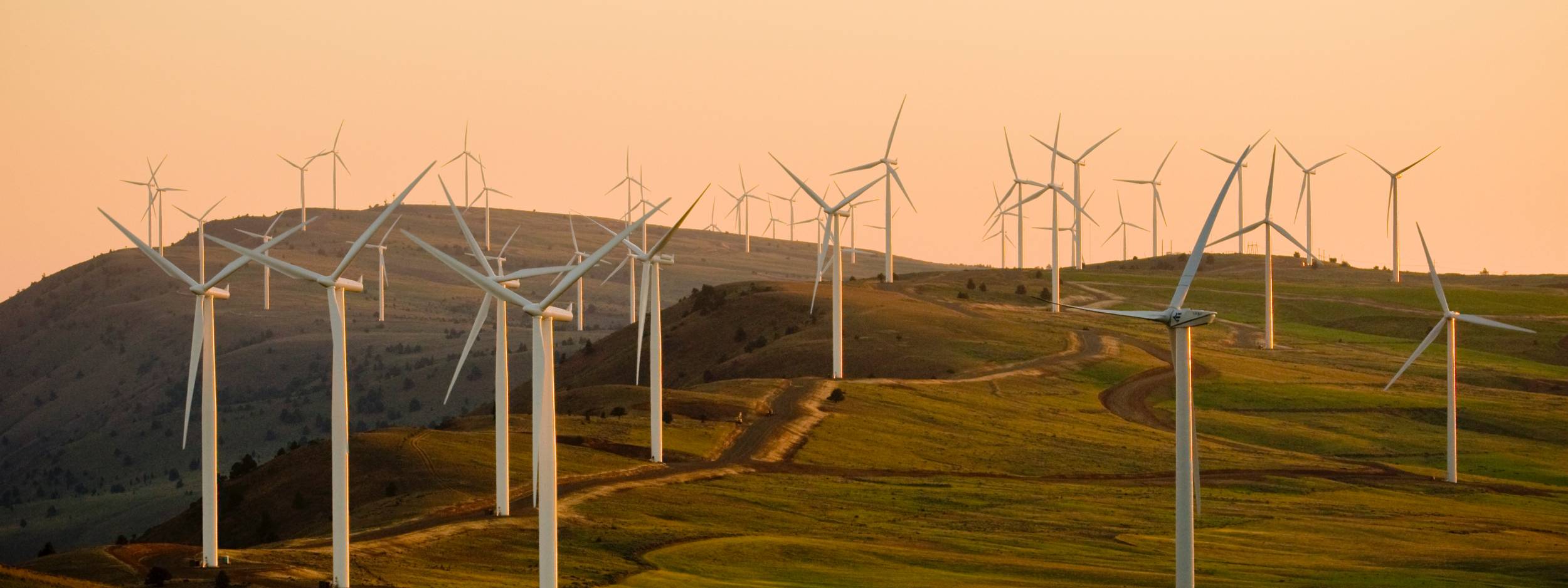
By Scott Whittemore 03/26/2019
Between 2009 and 2016, installed project costs for new wind farms dropped 33%, while also generating more electricity per turbine thanks to new technologies and economies of scale. The growing number of consumers and corporations choosing to purchase renewable electricity (such as The Energy Co-op’s 99% wind 1% solar electricity) create strong incentives for both new wind projects and ongoing research and development. This R&D is delivering results: proposed new technologies could further cut the cost of wind energy by 50% in the next 10 years. This technology is called the SMART Wind Power Plant of the Future.
“SMART” is an acronym for “System Management of Atmospheric Resource through Technology”. SMART wind is a combination of wind turbine siting and management technologies which could create nearly $150 billion in electric sector cost savings within thirty years of their implementation. In order to implement SMART technologies, the National Renewable Energy Lab, funded by the U.S. Department of Energy has been researching high-fidelity computer modeling, the physics surrounding wind turbine noise generation, integrated wind plant control, system design, and system analysis, and reliability. By measuring, recording, and analyzing atmospheric data, SMART technologies would allow wind generators to “achieve enhanced power production, more efficient material use, lower operation, maintenance, and servicing costs, extended plant life, and more grid control and reliability.”
A wind farm developed and operated using SMART technologies would not necessarily have identical turbines like many currently operating wind facilities, but could have turbines of all sizes, positions, and heights to ensure maximum generation of clean electricity. Through an integrated wind power plant design, a SMART wind farm would monitor the wind to actively manage the orientation of the turbines to ensure optimal efficiency and output by optimizing wind exposure. By generating more electricity per turbine, this technology increases wind farm efficiency and could enable the integration of more wind production to the grid.
One downside to current wind power facilities is the lack of certainty around generation and the correlated challenges to short-term generation forecasts. This encourages the continued use of fossil fuels due to their demand reliability. Plants that utilize SMART wind technologies would be able to generate power and forecast load more reliably, which would allow grid operators to plan more effectively. Another area of improvement that SMART technology hopes to deliver is the cost of site maintenance and turbine replacement. Because the future wind plants would be run by a supercomputer capable of executing real-time mitigation of turbine component overuse, there are expected to be fewer failures, which means less money would be spent on maintenance and costly plant replacements.
By addressing the challenges that wind power currently faces, namely operational costs, generation efficiency, and low generation predictability, SMART wind technologies would dramatically improve wind power’s position in the national energy mix. By being cost-competitive with the cost of fracked natural gas, these technologies will enable wind power to continue to play a central role in the ongoing sustainable energy evolution.